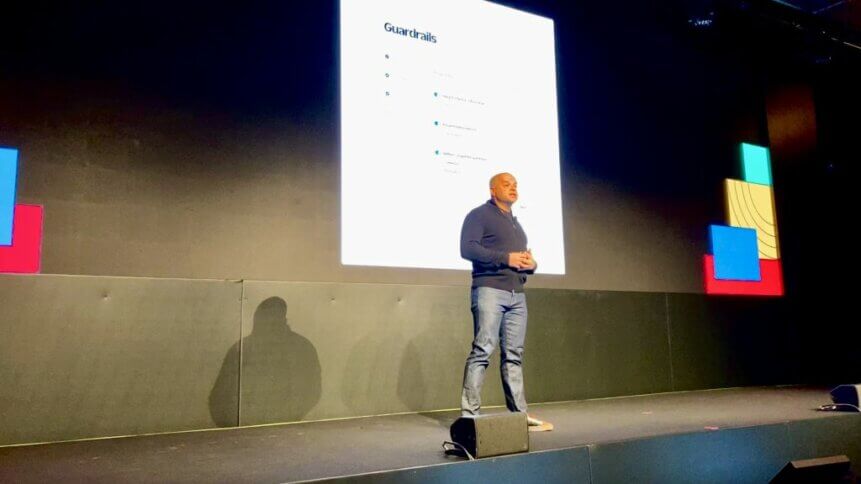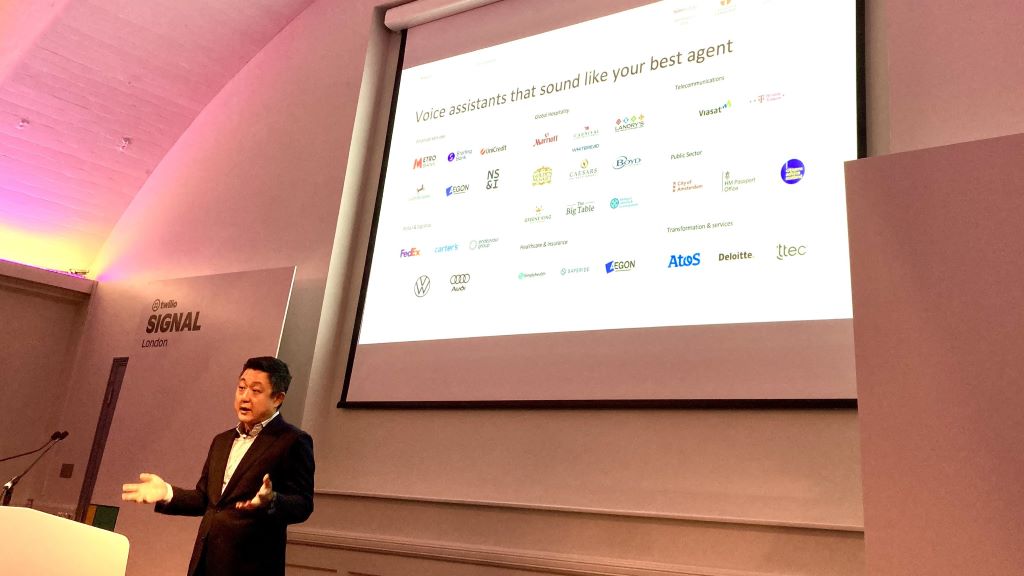How to spin the tech flywheel and retain customers

|
Getting your Trinity Audio player ready...
|
• Voice AI is an evolving technique that can help businesses answer the all-important question – how to retain customers.
• This is not your momma’s voice bot – the technology has become incredibly sophisticated.
• Just because it’s not a human collecting call data, there’s no reason to lose out.
Winning customers is hard, and once clients have purchased a product or service, it makes great business sense to hold onto them. Twilio pictures the process as spinning a flywheel, and Jeff Lawson – CEO of the business communications and data firm – was in London, UK, to say more about how technology helps to retain customers.
Back in August, Lawson announced that Twilio had partnered with OpenAI, which sent a clear signal on how important large language models (LLMs) will be in maximizing the opportunities for businesses to engage with clients. And sharing the stage at Twilio SIGNAL London, the European leg of the firm’s developer conference tour, were users with fascinating case studies on how to retain customers using advances in AI and related tools.
Setting the scene in his opening keynote and energized by the event’s return to London for the first time in seven years, Lawson told the packed auditorium that apps built using Twilio’s communications APIs had enabled 34 billion voice calls to customers last year. He also highlighted the work of the company’s social impact arm – Twilio.org – which supports non-profits, social enterprises, healthcare, and education institutions.
How to retain customers and recruit more volunteers
Participants in the lively customer discussion panel on how technology creates opportunity included Alasdair Stewart – director of National Services at Age UK, which runs an advice line for older people and their families among its other activities. Stewart described how the charity was now using Twilio’s tech stack to enable voice calls between its volunteers and those in need – something that had been done previously using a patchwork of seven different telephony systems.
“Twilio Flex allows volunteers to jump on a call from anywhere in the country,” he told the audience, explaining how it’s helped the charity to scale up capacity and recruit more widely. “We’re not so wedded to where our call center properties are.”
Excitement is building at SIGNAL London! 🚀
Join us at our stand with as proud Twilio Gold partners. Today, Twilio is taking customer engagement to new heights, exploring the possibilities of AI, and helping you build a customer-focused business that truly resonates.#Twilio pic.twitter.com/11osQz0EBn— Ciptex (@ciptex) October 31, 2023
AI fits in by helping the organization meeting its safeguarding obligations, and Stewart explained that sentiment analysis of voice transcription data was a helpful tool in making sure that all was well. Technology brings the benefit of scale and helps staff to prioritize the issues that need to be addressed.
From a utilities perspective, James Eddison – CTO at Octopus Energy, and another panellist at the SIGNAL London event – explained how customer service is key to beating the competition, with industry regulator Ofgen setting a price cap on how much suppliers can charge.
Like Lawson, who spoke about the need for guardrails when deploying AI, Eddision described how Octopus Energy applies a ‘belt & braces’ approach – removing PII before feeding data to models – when exploring how to retain customers. And currently, the energy firm is using AI to drive efficiency and quality, rather than fully automate calls.
The future is now – customer-led voice AI
However, in a ‘the future is now’ moment, Yan Zhang – COO of PolyAI, a developer of next-generation voice assistants, showed how capable AI can be in handling spoken customer queries today. Zhang played recordings of PolyAI’s customer-led voice bots to attendees during breakout sessions later in the afternoon. The voice AI was strikingly lifelike and effective in handling restaurant reservations and vehicle insurance queries, to list just a couple of the examples.
PolyAI creates a synthetic voice for clients that sounds like their best member of staff. And because AI doesn’t get tired or mind repetitive work, it’s a great example of how technology can help to retain customers by providing a consistently great experience.

Growth market for customer-led voice AI: Yan Zhang, COO of PolyAI, with a slide showing some of the big names using automation to boost caller experience. Photo credit: JT
The wrinkle is that when people make a call to a company, it’s generally because they want to talk to a human. And historically bad experiences of speaking with interactive voice response (IVR) software mean that when told that they are conversing with a bot, callers will often switch to using fewer words and speak differently.
Zhang told the audience that AI models do better with more words rather than fewer. In countries where it’s mandatory to tell customers that they are talking to a bot, such as in Germany, systems reveal themselves to be voice AI – despite the risk of callers then truncating their speech in response. However, in other geographies, such as the US and UK, where there’s currently no such requirement, PolyAI leaves the choice to the client.
In these scenarios, A-B testing will guide the decision. And you can picture how other design choices could be used. For example, offering callers a customer-led voice assistant to provide a faster resolution to their query, if they are waiting in line for a human agent.
Judging by the high quality of the real-life calls played by Zhang in his presentation, it won’t take long for people to put unhelpful IVR interactions to the back of their mind and find it completely natural to talk to voice AI. And while the output might sound effortless from the audio, there’s a lot happening behind the scenes.
In fact, the AI responses are cleverly designed to hide what would otherwise be pauses as API calls are made. For example, when setting up a table booking, the customer-led assistant lengthens the word ‘check’ in ‘let me just check’ – as a human would if they were scrolling to find availability. And because it sounds natural, it works brilliantly.
PolyAI uses a hybrid approach that combines intent blocks and generative AI to provide customer responses within the timescale of natural conversation. Companies can also learn from their own data. Just because there’s no staff member involved in a call, it doesn’t mean that the firm has to miss out on those insights.
Specific response: customer-led voice AI is a dramatic improvement on older generation IVR systems.
What became clear, hearing the developer examples of AI implementations, is that the justification for using automated approaches needed to be explainable to customers. And if you get it right, you’ll make rapid progress in understanding how technology can help to retain customers.
PolyAI was spun out of Cambridge University and today has offices in London and New York. In 2 years, its team has grown threefold and company revenue by a factor of ten as clients discover how good voice AI can be for their businesses. The company has big-name customers in financial services, retail, logistics, global hospitality, healthcare and insurance.
Communications platforms as a service (CPaaS)
There are other success stories too, supported by customer communications tech stacks. Alice Woodhead – digital product owner at NatWest – shared how the bank has modernized its systems to support the delivery of more than 10 million SMS messages and in the region of half a billion push notifications to customers every month.
Efficiency gains feed into better customer experience and have also reduced losses due to fraud as alerting is more rapid. Tracking back to Lawson’s keynote, if you spin the tech flywheel – for example, by making websites more relevant through customer journey data, getting your email targeting right, and using CPaaS to grow your community – the potential for success adds up.









